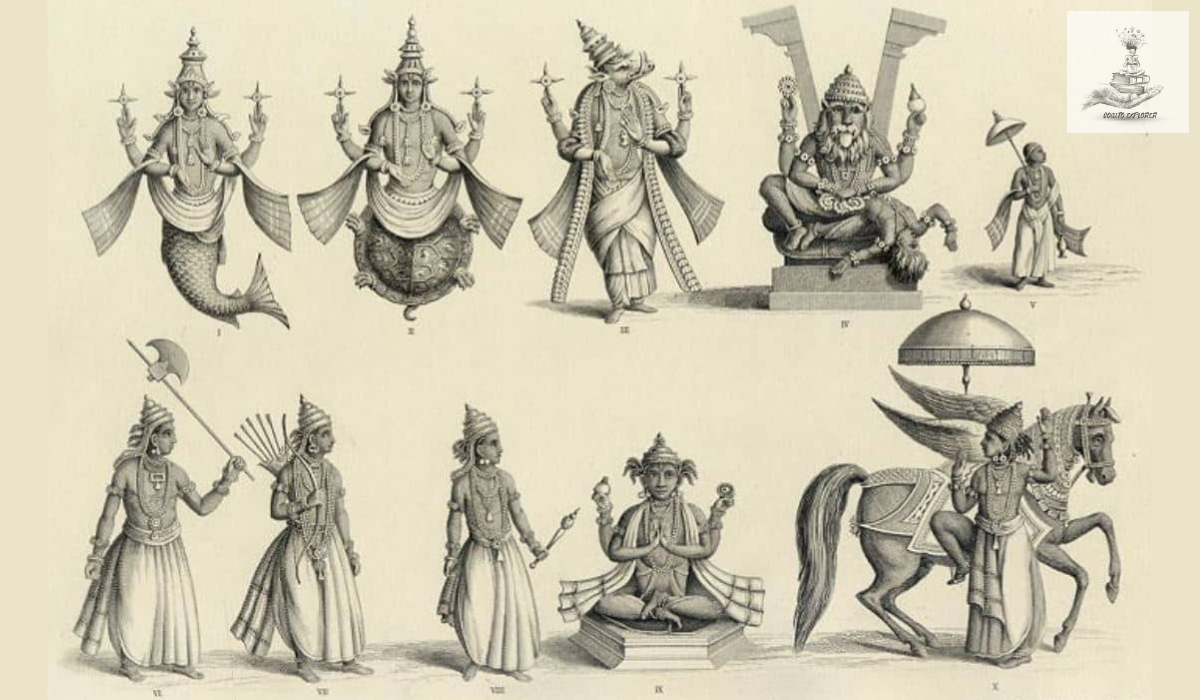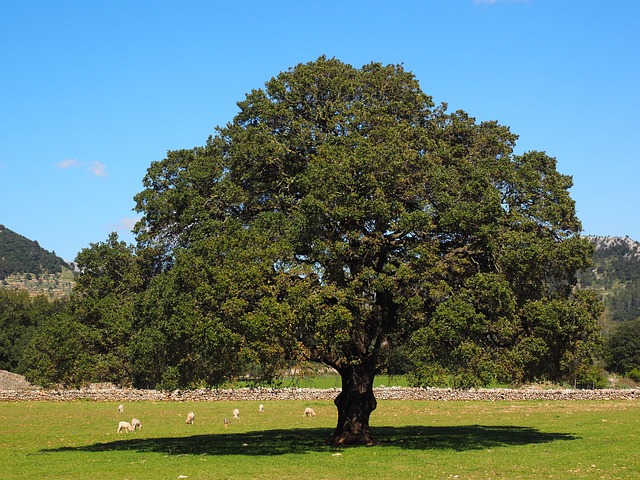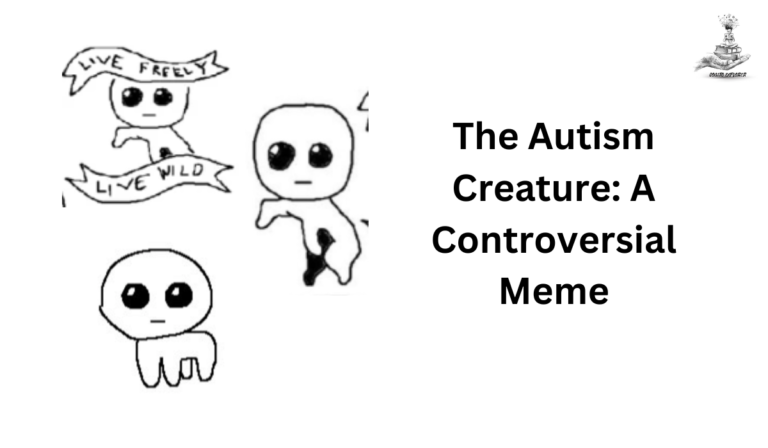Itihasa: The History of Life and Man
The term Itihasa is composed of two Sanskrit words: “iti” meaning “thus” or “so” and “hasa” meaning “it happened”. So, Itihasa can be interpreted as “so it happened” or “thus it happened” indicating it is more than just a record [not often exact] of past events. While, history generally refers to the study and recording of past events, particularly those related to human affairs encompassing a systematic and chronological account of events, developments, and activities that have shaped the world and societies over time. The term Itihasa in linguistic context covers a broader aspect i.e. of life [not just of humans] from the very beginning. Meaning the discussion on Itihasa will comprise two aspects: one that deals with the beginning and evolution of life as a whole and the other referring to the social being, man.
For example, ancient Indian literature talked highly about the Dashavtaras of Lord Vishnoo. If one observes the chronology their significance can be well interpreted in the field of evolution.
| Matasya (fish) Avtar | The Primitive Fish | Signifies the emergence of Chordates (Cambrian Period). |
| Kurma (tortoise) Avatar | The Amphibians | Signifies the emergence of Amphibians in the Devonian Period. |
| Varaha (boar) Avtara | Stem mammals | Signifying the divergence of Artiodactyls and Mammals. |
| Narasimha Avtara | Primates | Diversion of Primates signifying Half human – animal. |
| Vaman Avatar | Homo erectus | Earlier homo species with smaller average size than modern humans. |
| Parshuram Avtara | Fully grown Sapiens | Signifying Hunter and Gatherer communities. |
| Ram Avtara | Fully social Sapiens | Signifying civilizations and society. |
Tells us about how knowledge was kept or distributed among masses in ancient societies i.e. through stories that became folklore/ mythology over time keeping the knowledge alive even after thousands of years or more. In the context of ancient Indian societies, The Puranas can be seen as the literature of such genre [itihasa]. However, it’s unclear why only some of the important evolutionary events are storified while leaving out many other more significant evolutionary steps such as those belonging to the Precambrian periods.
The History and Evolution of Life
Eon (Years Ago) | Era | Period | Epoch | Events |
Hadean (4600M – 3900M) | – | – | – | Core and crust formation Atmosphere and Oceans (4400M) Single-celled organisms (Anaerobic) |
Archean (3900M- 2500M) | – | – | – | Oldest Rock Deposits Cyanobacteria – Photosynthesis – Stromatolites – Oxygen Formation(2700M) |
Proterozoic (2500M – 540M) | – | – | – | Great Oxygenation Event (2400M) Eukaryotes (Cells with nucleus) |
Phanerozoic (after 540M) | Paleozoic (Coal Amphibians and insects) (540M – 252M) | Cambrian | – | Chordates Evolved |
Ordovician | – | Marine Life (Coral, Primitive fish, Cephalopod) Extinction (85% life) – Cooling | ||
Silurian | – | Freshwater & Jawed fish The oldest known fossils of Coral Reef | ||
Devonian (Age of Fishes) | – | Emergence of Amphibians Extinction (70% life) – Asteroid & Cooling | ||
Carboniferous | – | Amphibians evolved Gondwanaland disintegrated | ||
Permian | – | The Great Dying (95% of life) – Volcanic | ||
Mesozoic (Age of Reptiles) (252M – 66M) | Triassic (252M – 201M) | – | Earliest known Dinasours appear | |
Jurassic (201M – 145M) | – | The western half of Gondwana disintegrated from the eastern half Domination of Dinasours | ||
Cretaceous (145M – 66M) | – | Deccan Trap and Trans Himalayas Diversion of Primates Extinction (80% life) – Asteroid, Volcanic, Falling Sea levels | ||
Cenozoic (Age of Mammals) (66M onwards) | Tertiary (Paleogene) | Paleocene (66M – 55M) | Continents began to drift toward their modern positions | |
Eocene (55M – 34M) | Formation of Greater Himalayas The emergence of Primates (36M) | |||
Oligocene (34M – 23M) | Regression (Tropics – equatorial) Hominoids (24M) | |||
Tertiary (Neogene) | Miocene (23M – 5.5M) | Apes and Hominids Lesser Himalayas | ||
Pliocene (The Great Ice Age) (5.5M – 2.5M) | Shivaliks formed | |||
Quaternary | Pleistocene (The Era of Modern Life) (2.5M – 12000YA) | Foredeep (Sindhu – Ganga Basin) Homo Habilis (2.2M) Homo Erectus (1.8M) Homo Sapiens (0.19M) | ||
Holocene (12000YA onwards) | Age of Man |
Anthropocene (1950 onwards) | Lasting Footprint of Man visible on Planet |
The History and Evolution of Man

Primates
Primates are a diverse order of mammals that includes humans, apes, monkeys, lemurs, tarsiers, and prosimians. They share common features such as forward-facing eyes, grasping hands and feet, nails instead of claws, and well-developed brains. Primates exhibit adaptations for arboreal and, in some cases, terrestrial lifestyles. They often have a well-developed vision and live in social groups with complex social structures.
- Early Primates (60M-55M)
The earliest primates appeared during the Paleocene epoch, about 60-55 million years ago. These early primates were small, tree-dwelling mammals with adaptations for climbing. They include groups like Plesiadapiformes.
- First True Primates (55M-34M)
The first true primates, known as Euprimates, emerged during the Eocene epoch. This group includes adapiforms and omomyids. Euprimates had adaptations such as forward-facing eyes, grasping hands and feet, and increased brain size relative to body size.
- Old World Monkeys and Apes (30M-25M)
Old World monkeys (Catarrhini) and apes diverged from a common ancestor. The first hominoids (apes) appeared during the Miocene epoch, around 23 million years ago.
Hominoids (24M): The Great Apes
The Great Apes are a group of primates that includes orangutans, gorillas, chimpanzees, bonobos, and humans. Hominoids share certain anatomical features, such as a larger brain relative to body size, a reduced snout, enhanced flexibility in the shoulder joint, and a generally larger body size compared to other primates. Ramapithecus, Krishnapithecus, and Shivapithecus are hominoids (apes) that lived in the past and are part of the evolutionary history leading to modern apes and humans.
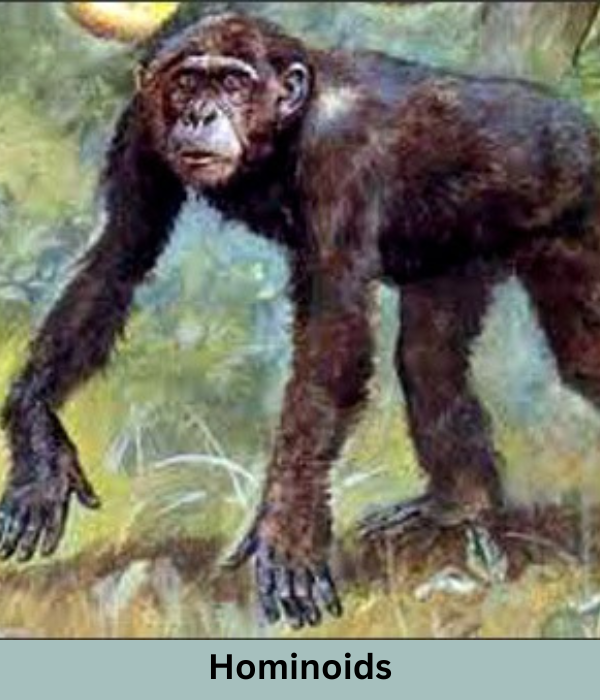
- Ramapithecus
Lived Approximately 14 to 8 million years ago (Late Miocene) in Africa and the South Asian region Ramapithecus was once considered a possible human ancestor due to its dental and jaw characteristics (resembling early hominins). However, subsequent research and discoveries have led to a reassessment of its place in the evolutionary tree. It is now considered more likely to be a distant relative of the orangutans.
- Krishnapithecus
Lived Approximately 15 million years ago (Middle Miocene) in the Siwalik Hills of northern India Krishnapithecus is another extinct hominoid that lived around the same time as Ramapithecus. Like Ramapithecus, it is considered to be more closely related to the orangutans than to the African apes (gorillas, chimpanzees, and bonobos) or humans.
- Shivapithecus
Lived Approximately 12 to 8 million years ago (Late Miocene) in the Siwalik Hills of northern India and Pakistan Shivapithecus is another extinct hominoid and is considered by some researchers to be more closely related to the ancestors of modern orangutans. It exhibits dental and cranial features similar to orangutans.

Hominids (6M – 5M)
Hominids, in the modern sense, are characterized by bipedalism (walking on two legs), larger brains, and other anatomical and behavioral traits that distinguish them from other primates. The term includes humans and our direct ancestors after the split from the chimpanzee lineage which typically includes the genus Homo (humans) and our closest extinct relatives, such as Homo Neanderthals, Homo erectus, and others.
Hominins
Hominins are a tribe within the family Hominids, specifically referring to the branch that includes humans and our closest extinct relatives [arguably] after the split from the chimpanzee lineage. It includes modern humans (Homo sapiens) and our direct ancestors, such as Australopithecus (Lucy), Ardipithecus, and other extinct species leading up to the emergence of Homo. Hominins are characterized by bipedalism, reduction in canine size, changes in dentition, and other anatomical features (jaws) that distinguish them from other primates. The term hominin is often used to describe species more closely related to humans than to chimpanzees.
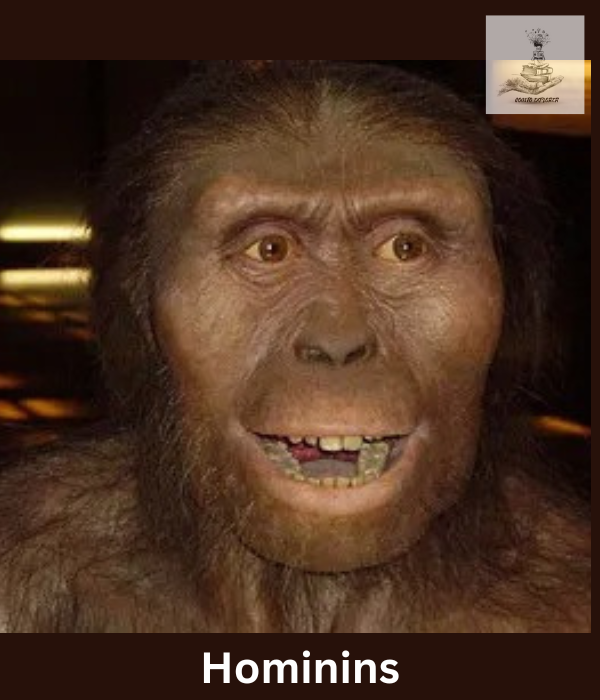
Homo Genus (2.5M)

Homo Habilis
Homo habilis is an extinct species of early humans that lived approximately 2.4 to 1.4 million years ago during the Pleistocene epoch. It literary means handy man reflecting its association with tool-making. Discovered by Louis Leakey in the 1960s, Homo habilis is known for its association with the Oldowan stone tool industry, marking an important milestone in the evolutionary transition from Australopithecus to later Homo species like Homo erectus. They are considered one of the earliest members of the genus Homo and had a larger brain than Australopithecus species, with evidence of tool use, suggesting increased cognitive abilities.
Homo Erectus
Homo erectus [upright] is an extinct species of early humans that lived from approximately 1.9 million to 140,000 years ago. Found in Africa and Asia, Homo erectus exhibited notable adaptations, including a larger brain (averaging around 900 cubic centimeters), reduced facial prognathism, and an efficient bipedal gait [migration]. Associated with the Acheulean stone tool industry, they were skilled hunters and gatherers who likely used fire for cooking. Homo erectus is recognized for being the first hominin species to disperse widely from Africa, colonizing parts of Asia. Associated fossil specimens include Java Man and Peking Man.
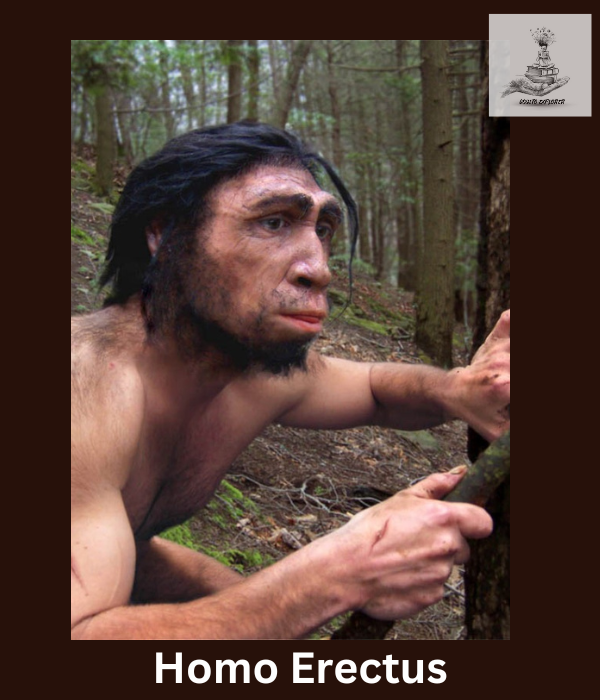
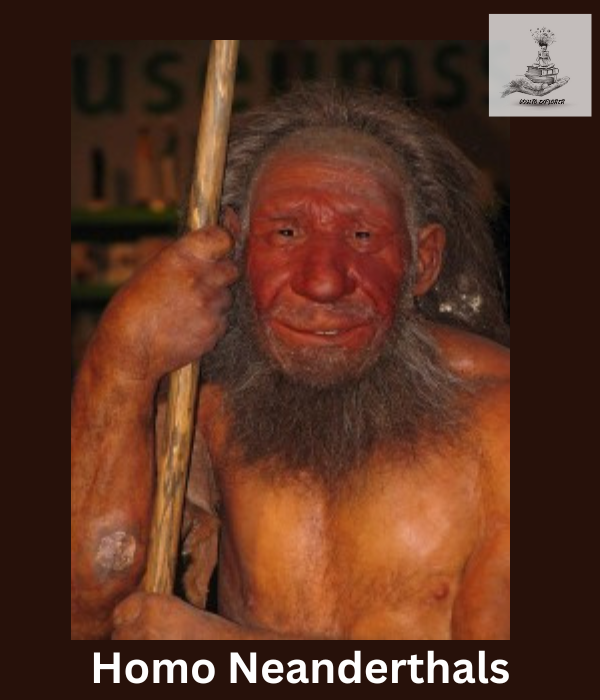
Homo Neanderthals
Homo Neanderthals, were an extinct human species that lived in Europe and parts of Asia from around 400,000 to 40,000 years ago. Well adapted to cold climates, they had a robust build, large brains, and distinctive facial features. Neanderthals exhibited a sophisticated culture, creating tools like Mousterian stone tools and engaging in hunting and symbolic behaviors, such as burying their dead and the creation of art. They coexisted with Homo sapiens for a period, with evidence of interbreeding. Neanderthals eventually went extinct around 40,000 years ago, possibly due to a combination of factors, including climate change and competition with Homo sapiens.
Cro-Magnon
Cro-Magnon refers to a population of early modern humans who lived in Europe between 40,000 and 10,000 years ago during the Upper Paleolithic period. Named after the Cro-Magnon rock shelter in France, they were anatomically similar to modern humans and displayed a robust physique adapted to the last Ice Age. Cro-Magnon culture is associated with advanced stone tools, intricate cave art, and burial practices that suggest symbolic rituals. Cro-Magnon humans coexisted with Neanderthals for a period, and there is evidence of cultural and genetic interactions between the two populations. Their cultural achievements, including cave art and advanced tool technologies, highlight the complexity and sophistication of early modern human societies.
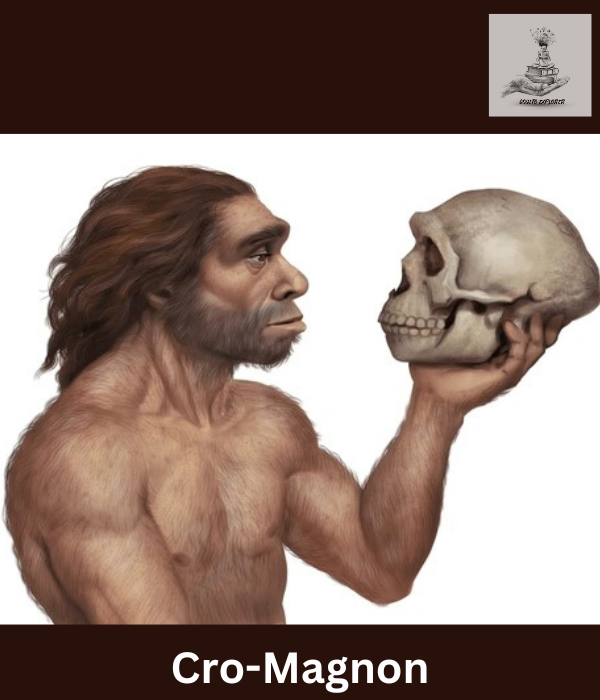

Homo Sapiens
Homo sapiens, or modern humans, originated in Africa around 200,000 to 300,000 years ago and have since spread globally. Homo sapiens is characterized by a high forehead, rounded skull, reduced brow ridges, and a prominent chin. Modern humans exhibit complex language, advanced tool use, art and symbolic behavior. The development of agriculture and complex societies occurred during the Holocene epoch. They exhibit adaptability, migrating to various environments and coexisting with other hominin species. Socially complex, Homo sapiens form diverse societies with intricate social structures. The species’ success is attributed to advanced cognitive abilities, cultural complexity and adaptability.
Homo sapiens represent the most recent and only surviving branch of the human evolutionary tree. The species has undergone remarkable cultural, technological and behavioral developments, shaping the world and influencing the environments they inhabit.
Denisovans
Denisovans are an extinct group of archaic humans known primarily through genetic evidence extracted from fossils found in Denisova Cave in Siberia. They share a common ancestor with Neanderthals but represent a distinct lineage. Genetic studies have revealed that Denisovans interbred with both Neanderthals and early Homo sapiens, leaving a genetic legacy [low oxygen adaptations and immunity] in some modern human populations. Denisovan ancestry (substantial) can be found at Melanesia and some of the Australian & Eastern Asian islands.
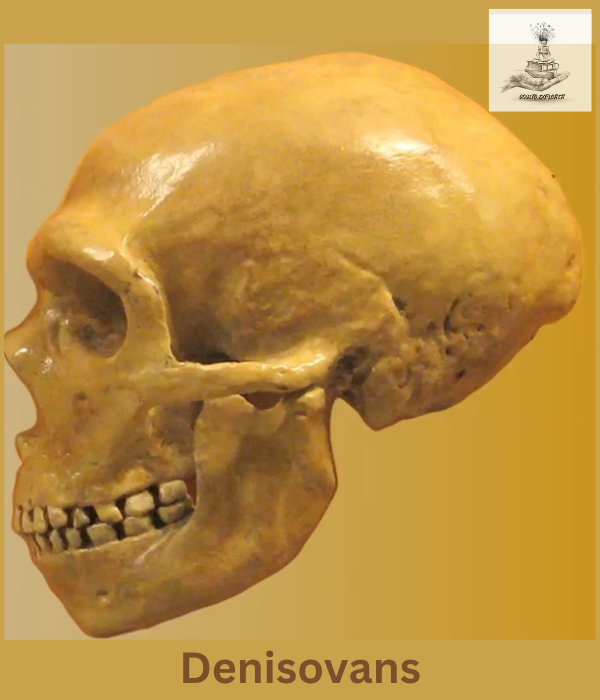
Itihasa: A Broader Past
History provides insights into the evolution of civilizations, the struggles and achievements of individuals and societies, and the factors that have influenced human progress. Whereas Itihasa is a broader term referring to the interpretation and analysis of the past to understand patterns, causes and consequences of events. Moreover irrespective of the term used they both play crucial roles in shaping our understanding of the present and can inform future decision-making by drawing lessons from the experiences of the past.

Another genre of events that the term Itihas comprises is the discussion about life as a whole in addition to the evolution of humans. In relation to the evolution of humans, it includes exploring various aspects such as political, economic, social, cultural, and technological changes. Whereas from the perspective of the emergence and evolution of life, we have to look at the complete biological timeline from the very beginning. Although the question related to Where to begin from? remains debatable. So, in this article, we took a subtle approach in choosing the starting date. In our following articles, we will be discussing Itihas as A History of Violence and Wars raged for various social, political and economic reasons.

